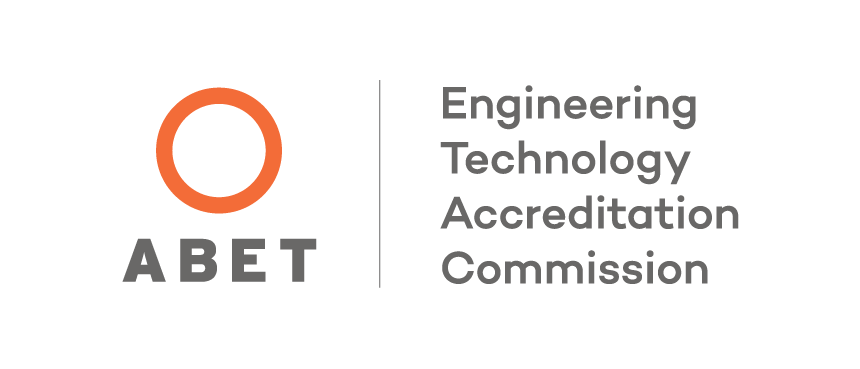Electrical/electronic engineering technology accreditation
The Bachelor of Science in Electrical/Electronic Engineering Technology program is accredited by the Engineering Technology Accreditation Commission of ABET, https://www.abet.org, under the commission's General Criteria and Program Criteria for Electrical/Electronic(s) Engineering Technology.

The BSEET program emphasizes hands-on laboratory experiences, and courses stress the practical application of mathematics, science, and engineering to solve real world problems.
Enrollment and graduation statistics
| Year (fall semester) | Enrollment | Degrees awarded |
|---|---|---|
| 2024 | 58 | 13 |
| 2023 | 56 | 10 |
| 2022 | 45 | 18 |
| 2021 | 53 | 19 |
| 2020 | 62 | 15 |
| 2019 | 71 | 24 |
Program educational objectives:
Program educational objectives are broad statements that describe what graduates are expected to attain within a few years after graduation. Program educational objectives are based on the needs of the program's constituencies.
PEO-1 To produce graduates who attain gainful employment and practice successfully in electrical or electronic related engineering technology professions;
PEO-2 To produce graduates who remain technically current and adapt to rapidly changing technologies through continuous learning and self-improvement;
PEO-3 To produce graduates who demonstrate independent thinking and function effectively in teams to solve open-ended problems in a professional environment;
PEO-4 To produce graduates who communicate effectively and perform ethically and professionally in business, industry, and society.
Student outcomes
Student outcomes describe what students are expected to know and be able to do by the time of graduation. These relate to the knowledge, skills, and behaviors that students acquire as they progress through the program.
Student outcomes for the EET program are:
- an ability to apply knowledge, techniques, skills and modern tools of mathematics, science, engineering, and technology to solve broadly-defined engineering problems appropriate to the discipline;
- an ability to design systems, components, or processes meeting specified needs for broadly-defined engineering problems appropriate to the discipline;
- an ability to apply written, oral, and graphical communication in broadly-defined technical and non-technical environments; and an ability to identify and use appropriate technical literature;
- an ability to conduct standard tests, measurements, and experiments and to analyze and interpret the results to improve processes; and
- an ability to function effectively as a member as well as a leader on technical teams.